By day, a lifted study-storehouse; night
Converts it to a flattened cube of light.
Whichever’s shown, the symbol is the same:
Knowledge; a University; a name.
Philip Larkin (1983). ‘On the Brynmor Jones Library’, from Collected Poems, 1988.

In light of our recently updated collection of Larkinian items within our Librarian’s Office, our latest blog post focuses on poet Philip Larkin’s career as head librarian at the Brynmor Jones Library. This includes what Larkin contributed to the library during his employment, and how his presence can be observed within the building today (with a brief glimpse into our Librarian’s Office Larkin Collection).
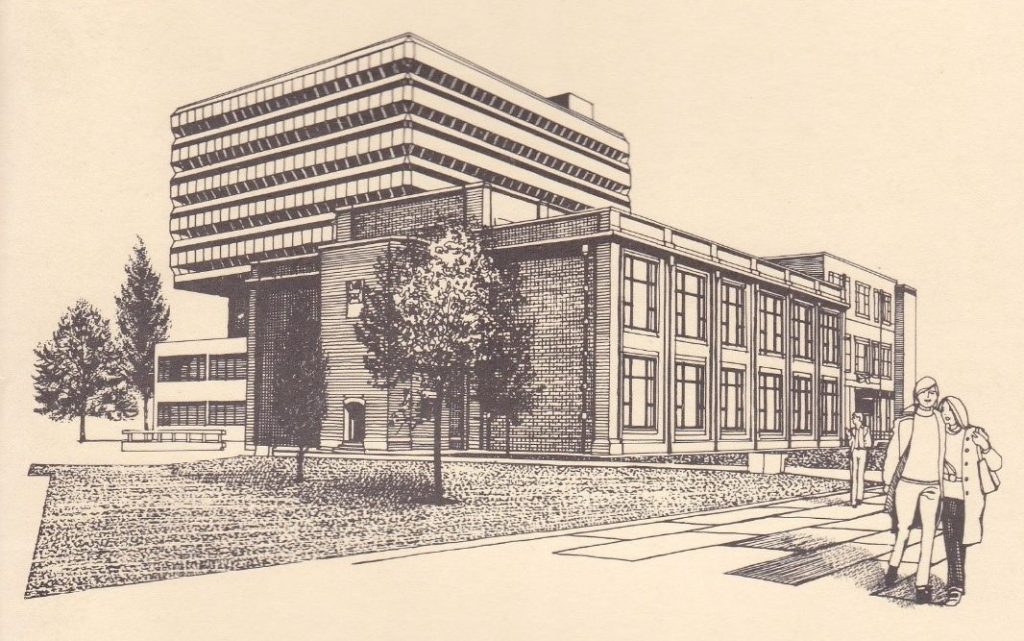
Hull University Library in the 1960s
Larkin’s biographer, and a poet in his own right, Andrew Motion wrote that ‘in all the libraries which employed him. Larkin combined the roles of scholar, technician and administrator’ (Goodman, 1999). At the time in which Larkin was employed at the University of Hull in 1955, he had held previous employment at several libraries from 1943 onwards. These being: Wellington Public Library (1943-1946), University of Leicester (1946-1950), and Queen’s University in Belfast (1950-1955). As Andrew Motion states, Larkin’s role as librarian involved multiple duties as part of the position.
This can be evidenced through Larkin’s career at the University of Hull, as he oversaw the transformation of the library alongside the university’s Vice-Chancellor of the time Sir Brynmor Jones, from which the library now takes its name. As of Larkin’s employment in 1955, the library contained 124,000 items and employed just 12 staff to support the 727 students of the university at this time. Larkin ‘presided over its transformation during the next two decades. A new purpose-built library was opened in two stages in 1960 and 1970, and by 1985 there were over 750,000 items in stock, a computerised catalogue and circulation system, and over 80 staff’ (Hull History Centre, 2017).
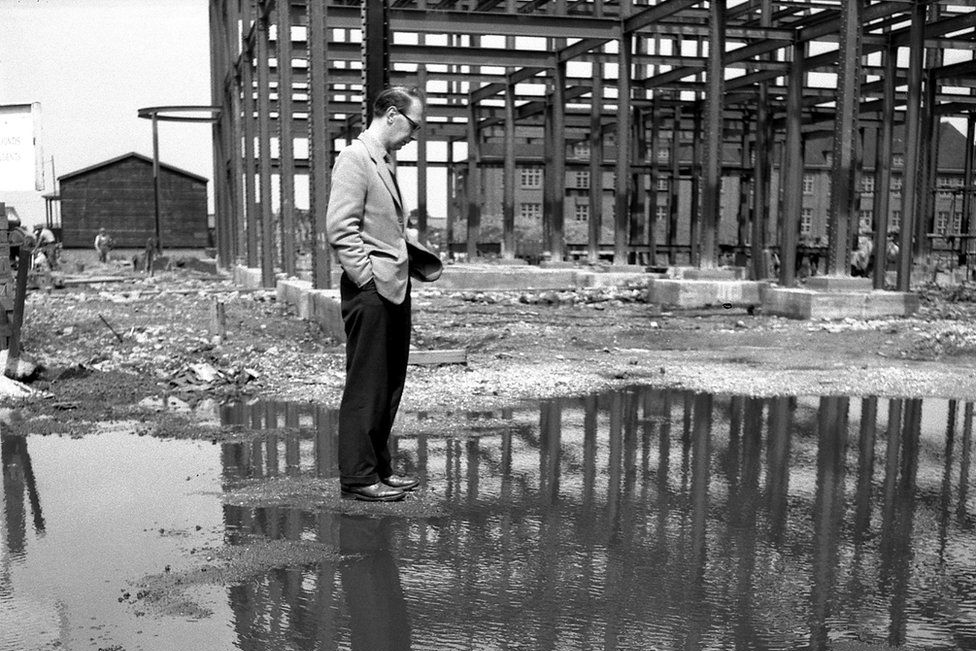
Larkin and the Library’s Transformation
At the time, the university library was one of the first to be redeveloped in post-war Britain. The task was understood to be challenging, given that Larkin had no previous experience in the architectural field. Larkin’s muse and co-worker Maeve Brennan recalled that Larkin worked on the project ‘far removed from library staff […] he spread out the plans for the new building and worked on them most afternoons. We had strict instructions that his whereabouts were not to be revealed nor was he to be interrupted except on matters of urgency’ (Goodman, 1999).
During this construction, the progress was split into two stages and would involve the production of a three-storey building complete with the addition of reading rooms. It was Larkin who made several suggestions to the university concerning the library’s layout during this period. This was specifically in regard to the university’s initial idea of separating the book stacks from the students within the building. The university accepted these recommendations, and certain aspects of Larkin’s attention to detail can be observed in the building’s inspired modern lighting and coloured stacks to this day. During this period, Larkin worked closely with the architect for the project and photographed the progress as the building was constructed.
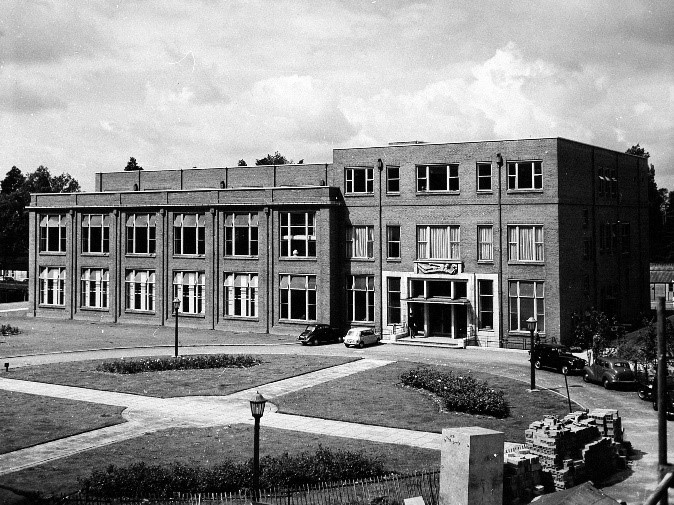

Larkin as Poet and Librarian
It is evident that during Larkin’s time at the University of Hull, his role blended between librarian and poet. It was during this period where Larkin produced his celebrated works The Whitsun Weddings (1964) and High Windows (1974). Despite the critical acclaim, Larkin chose to remain a private individual, even turning down the position of Poet Laureate in his attempts to avoid the limelight.
The poet seemed to prefer his role as librarian, once stating in an interview that ‘librarianship suits me […] it has just the right blend of academic interest and administration that seems to match my particular talents’ (Goodman, 1999). The university staff and students that interacted with Larkin during this period have given a mixed retelling of their experiences, many of which can be observed in the University of Hull Alumni Association’s blog which highlights particular memories of Larkin.
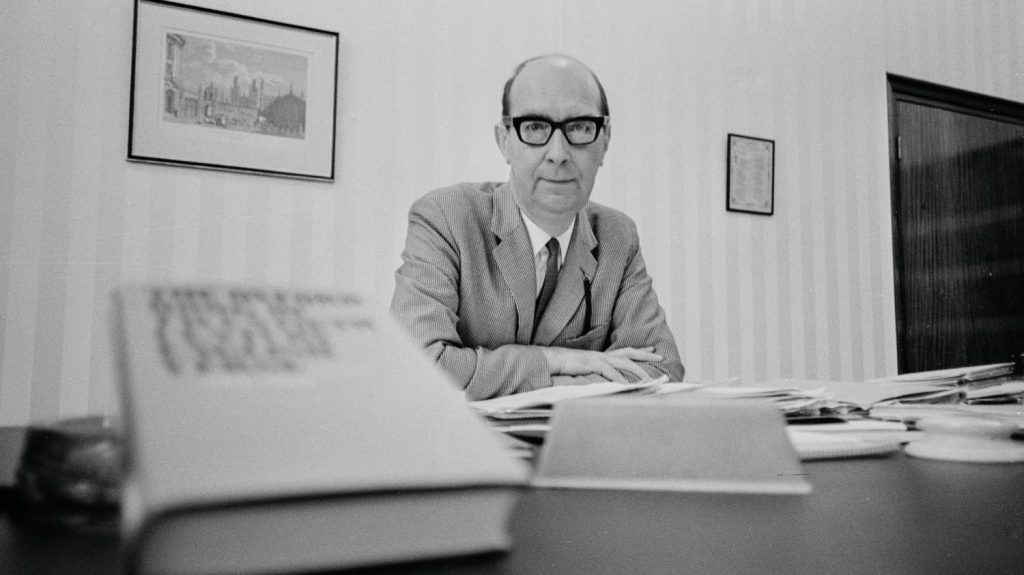
Larkin’s Presence Today
Larkin’s presence in the Brynmor Jones Library remains to this day, within the preserved location of the Librarian’s Office. This has been the office of the University of Hull librarian since 1959, when the first phase of the library was built under Larkin’s supervision. It was used by Philip Larkin from 1959 until his death in 1985. He wrote to his mother that ‘my room is so beautiful I can hardly believe it. I’m afraid it will make everyone so green with jealousy that I shall be the most hated person in Hull’ (Pearman, 2014). After Larkin’s death, his secretary, Betty Mackereth, with whom he had a secret love affair with, shredded the thirteen volumes of his diary in this office, in accordance to his wishes.
A number of things are original to the room:
The ‘Librarian’ sign on the door leading directly into the room from the outside is original to the 1959 building and can be seen in a shot of Larkin standing in front of the original door in the BBC documentary Philip LARKIN and John BETJEMAN on Poetry.
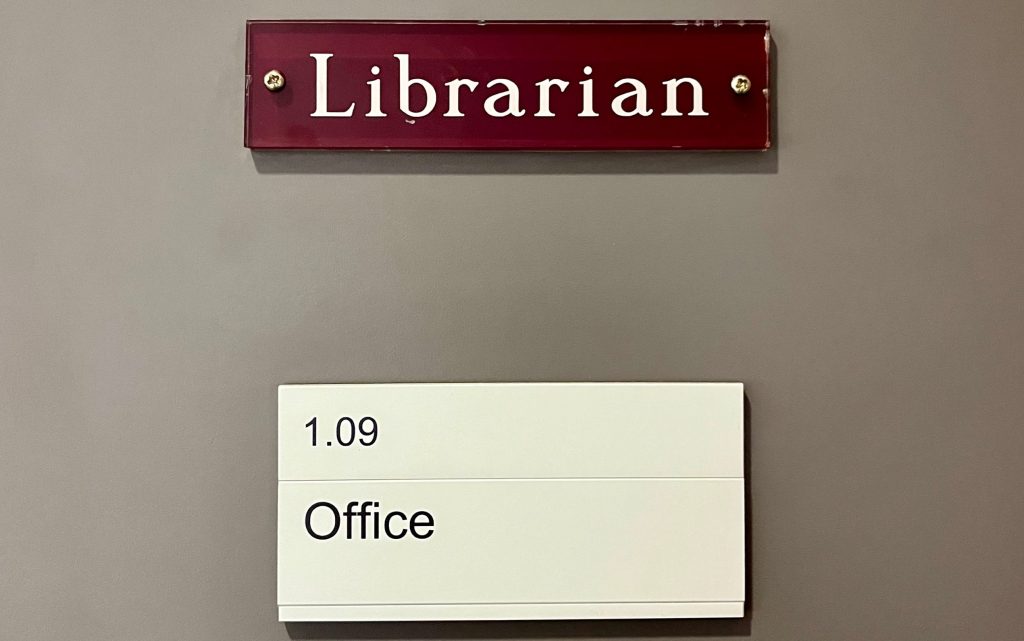
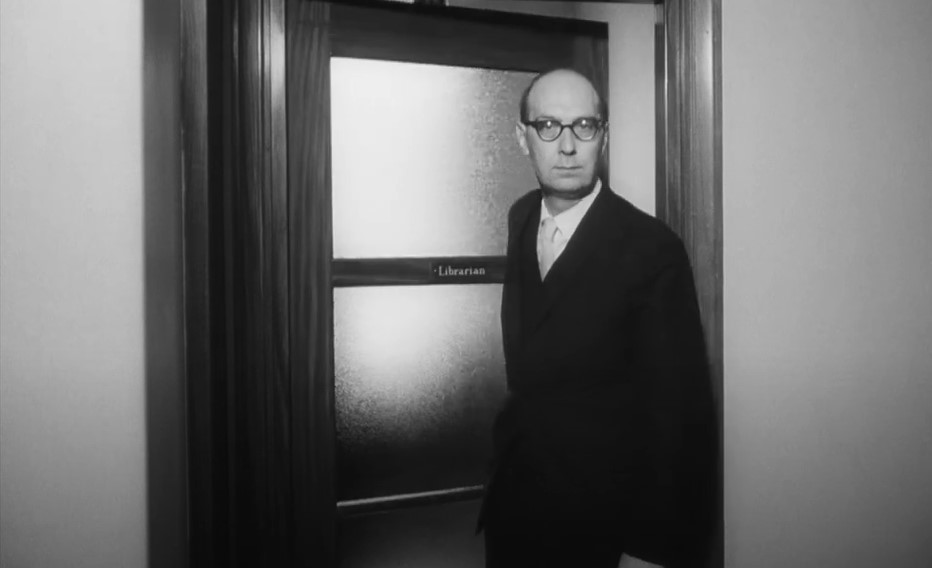
The bookcase: the collection of books, pictured below, is the Brynmor Jones Collection. It was assembled by the library in honour of the university’s Vice-Chancellor Sir Brynmor Jones when he retired in 1972. It consists of first editions of titles published between 1890 and 1940 that were nominated by the university’s academic departments as being of particular importance.
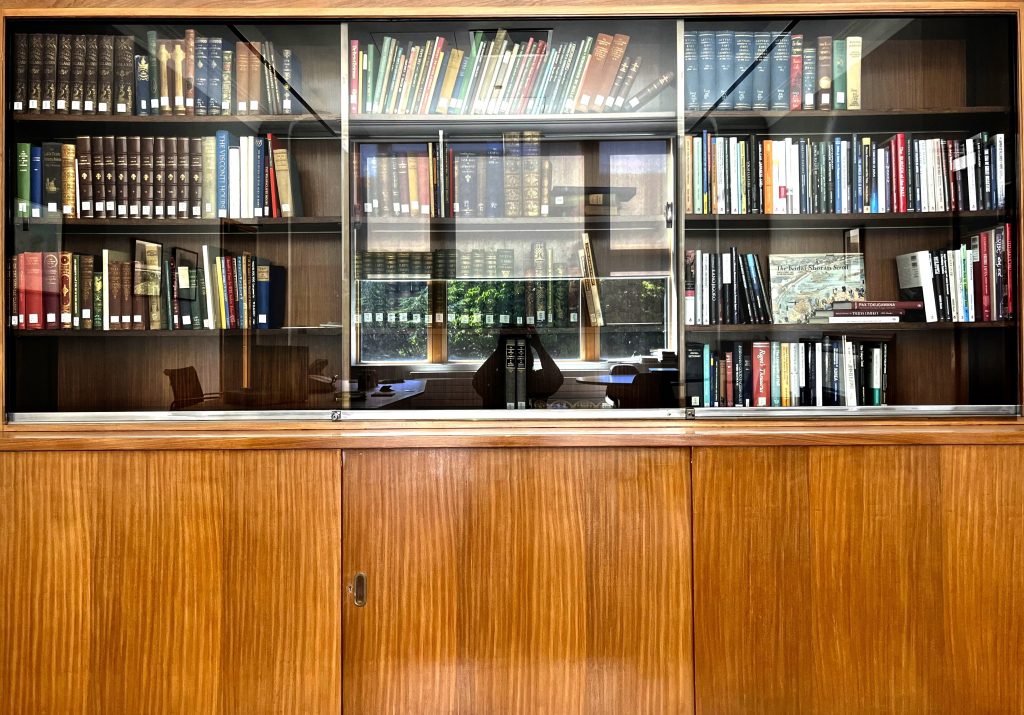
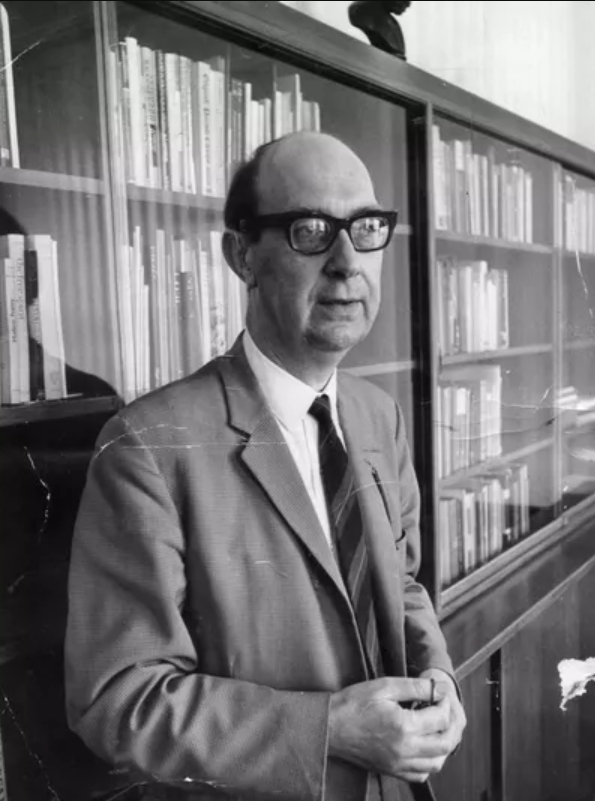
The electric fire and its surround, as well as the parquet flooring.
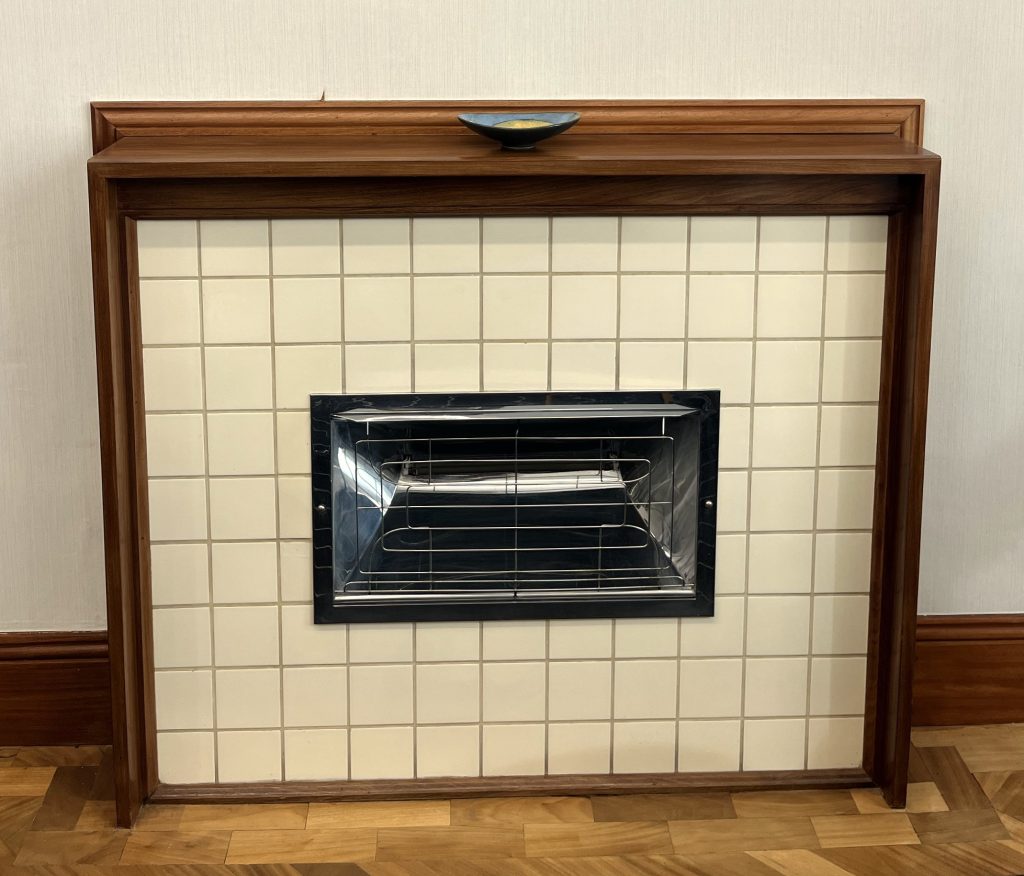
The desk, with a brass plaque commemorating its use by Larkin. He boasted that it was ‘larger than that of President Kennedy’ (Pearman, 2014). It was restored as part of the redevelopment of the library – the top is now real leather in place of the original leatherette.
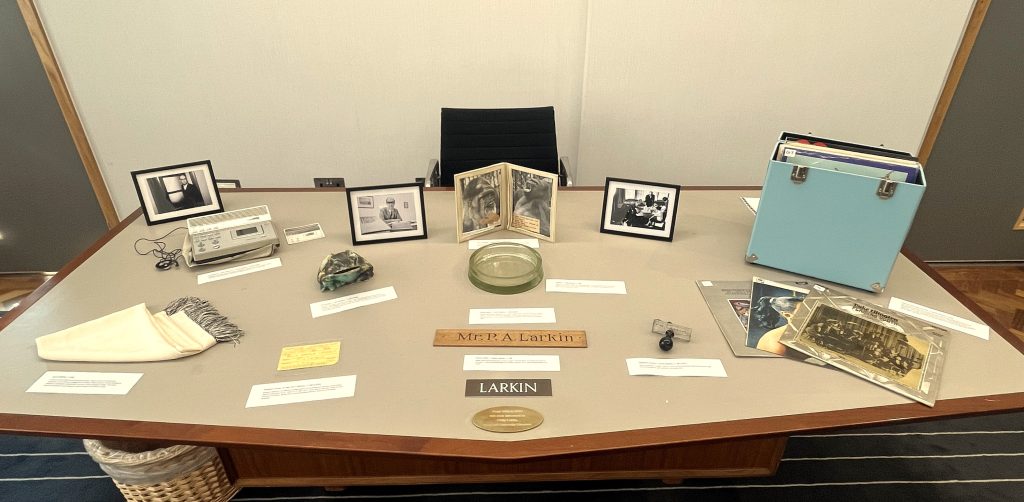
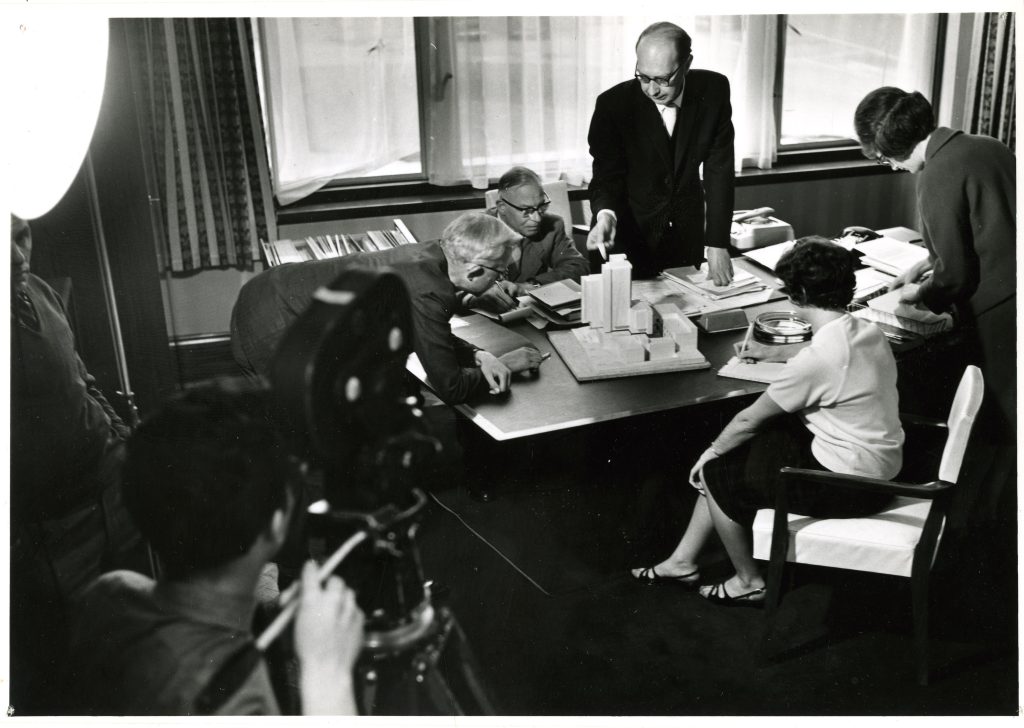
The two prints behind the desk belonged to Larkin. They depict the Radcliffe Camera, one of Oxford University’s many library buildings, and the Bridge of Sighs, at St John’s College, Cambridge. Larkin read English at St. John’s College, Oxford.
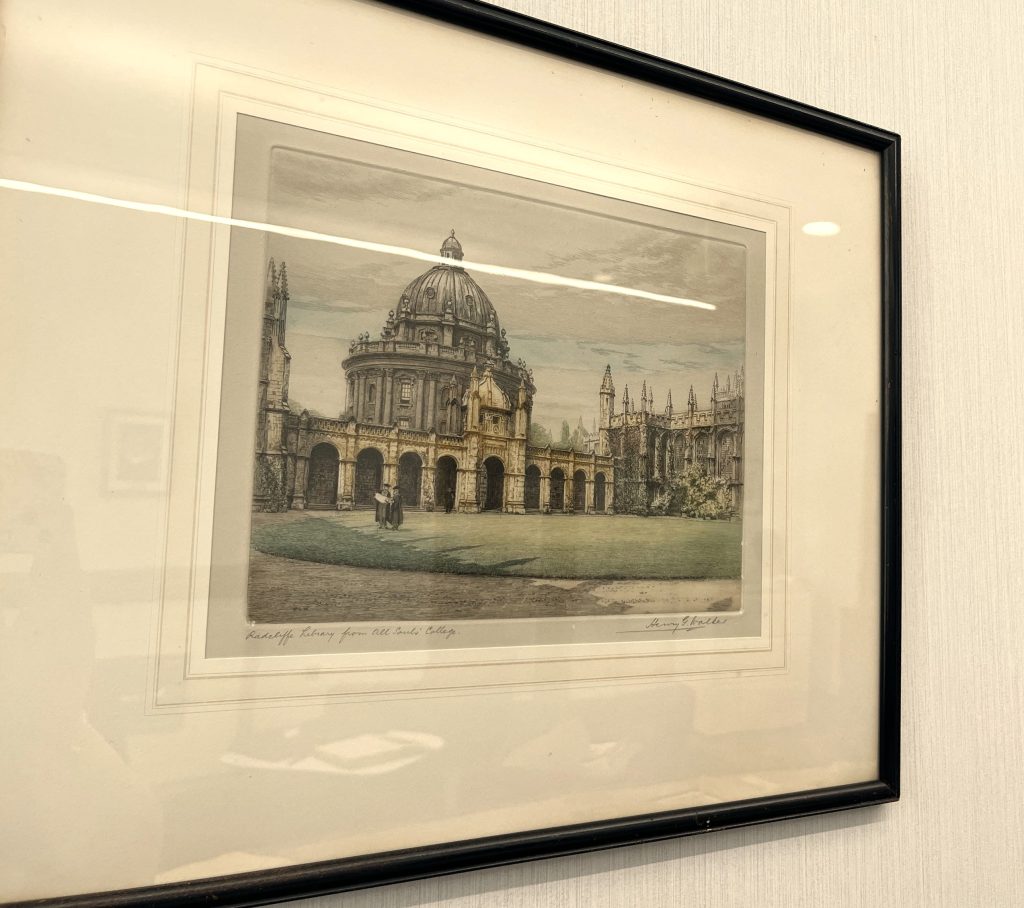

A number of Larkin’s personal items included throughout the room originally constituted part of the contents of Larkin’s office, and were still in place where he had left them when he died. They are as follows:
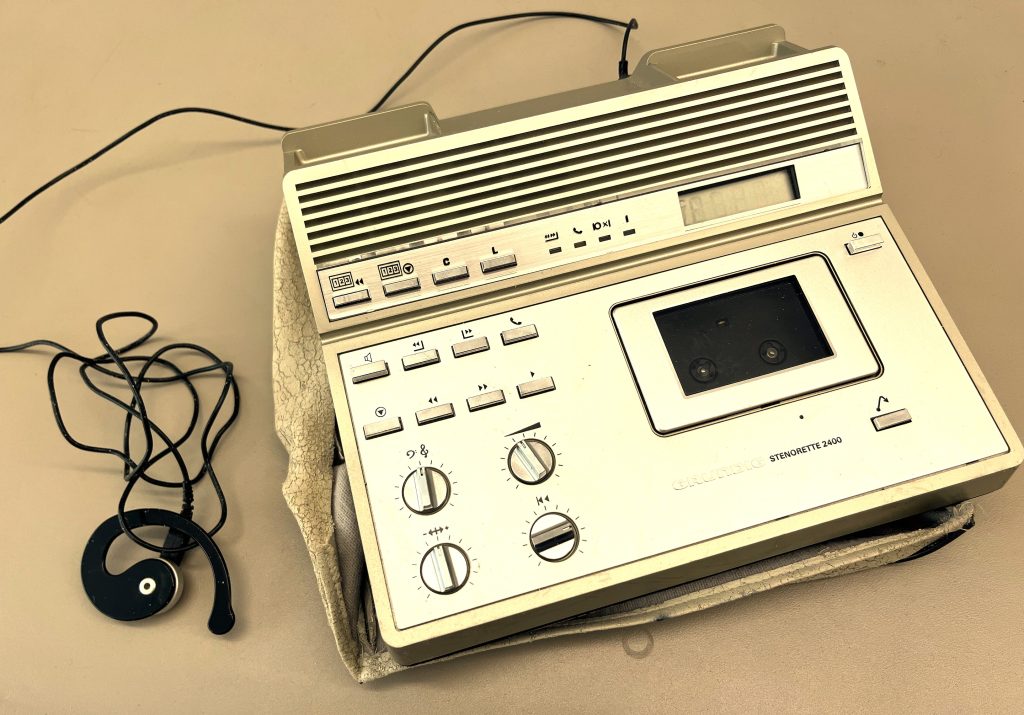
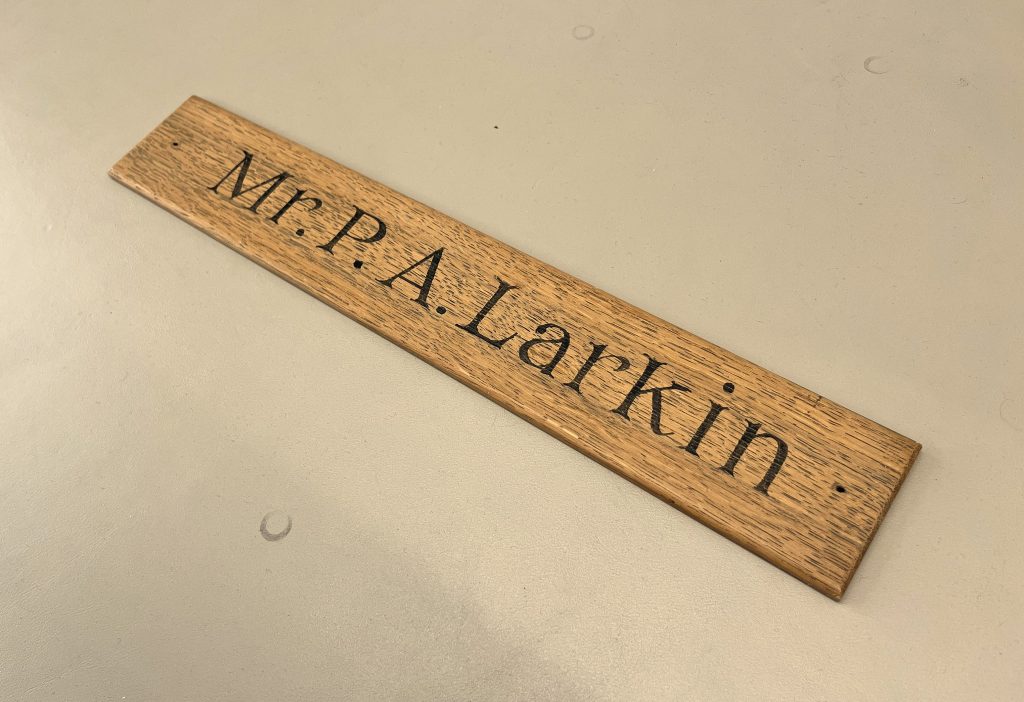
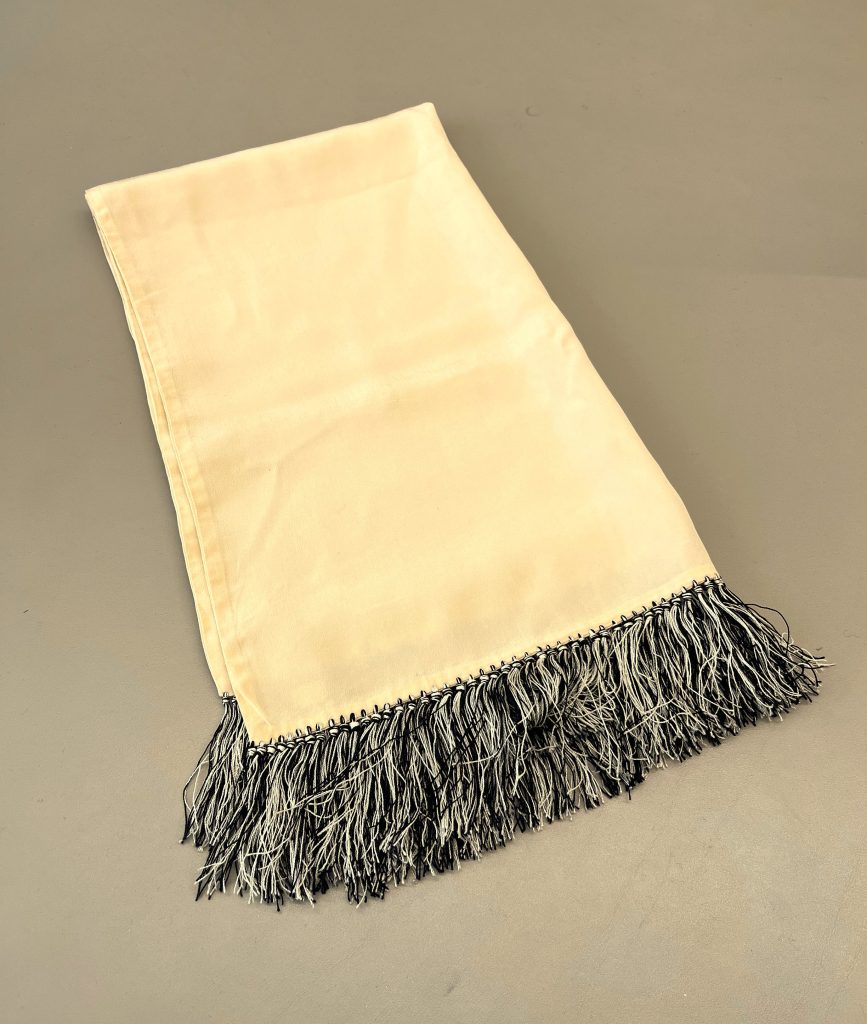
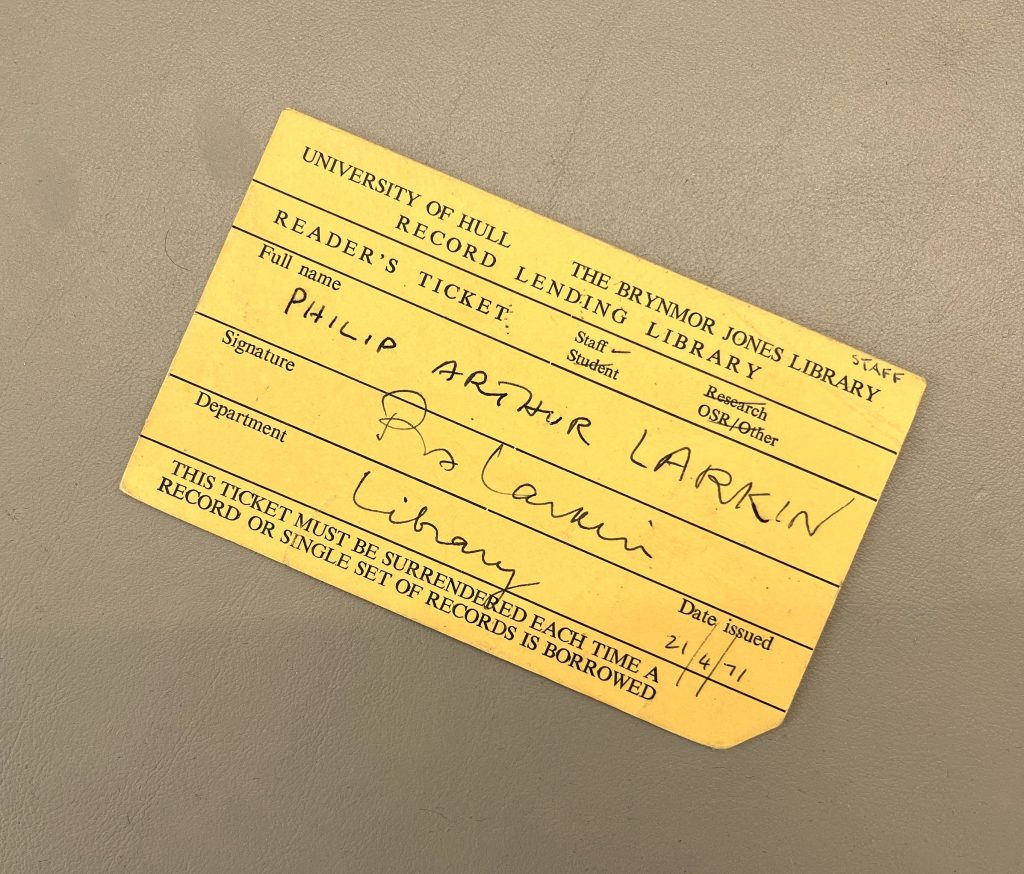
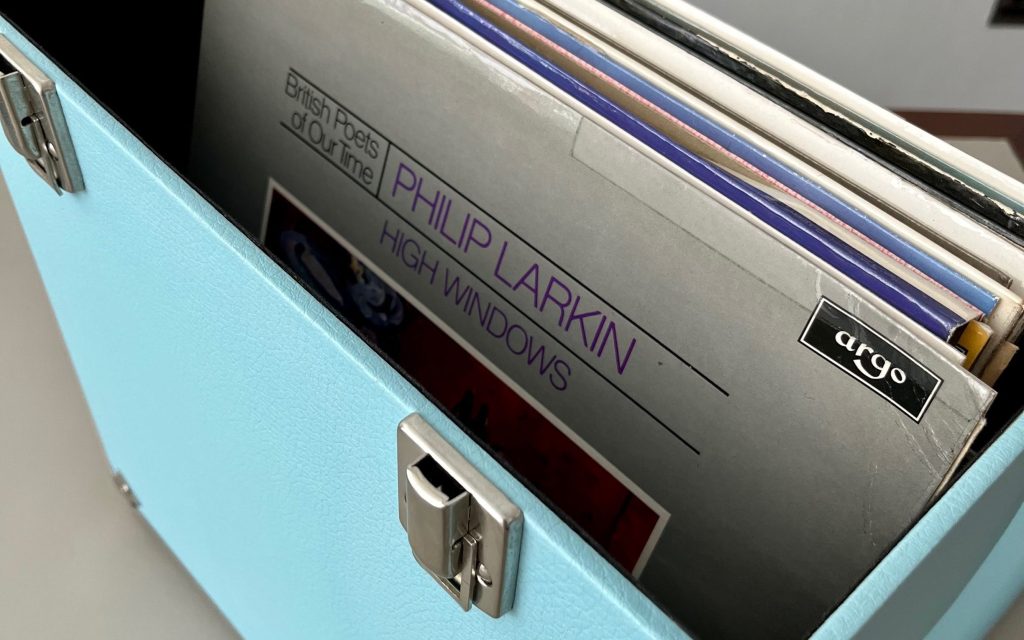

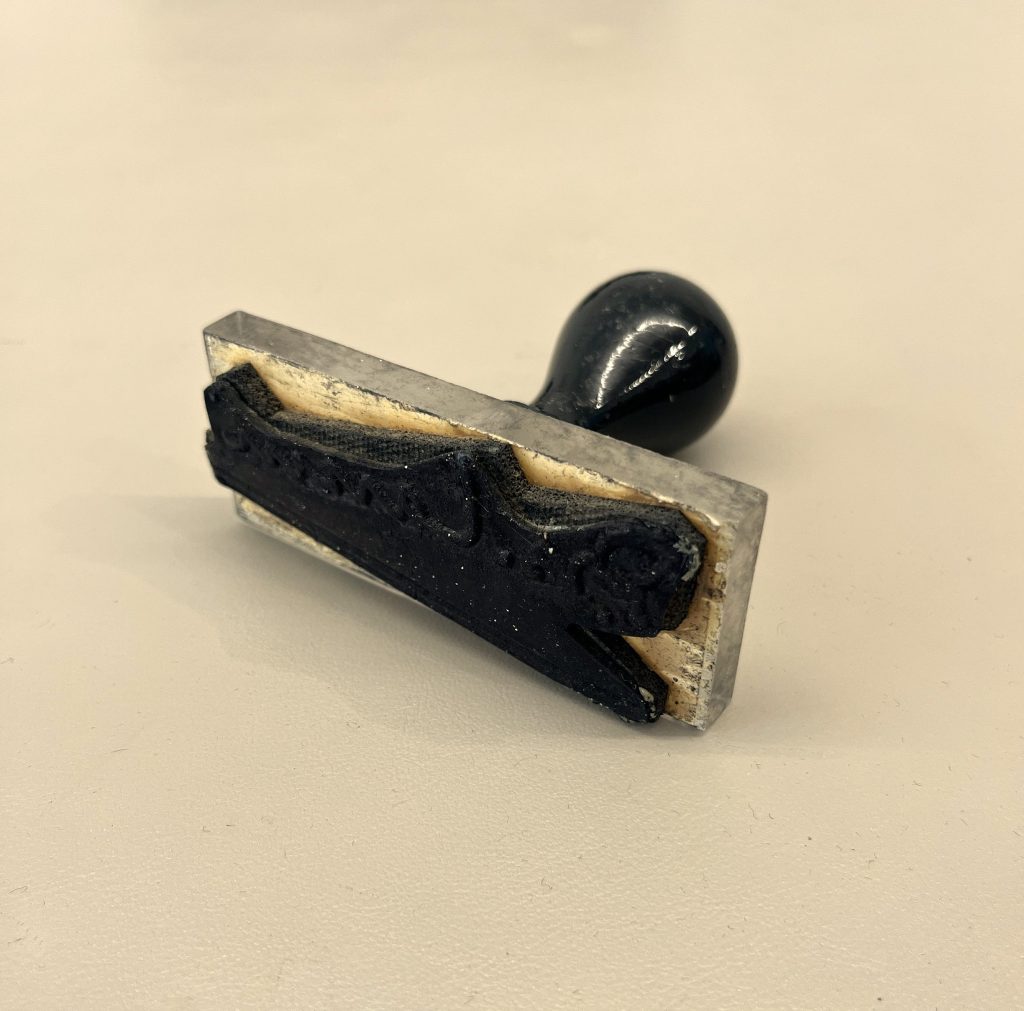
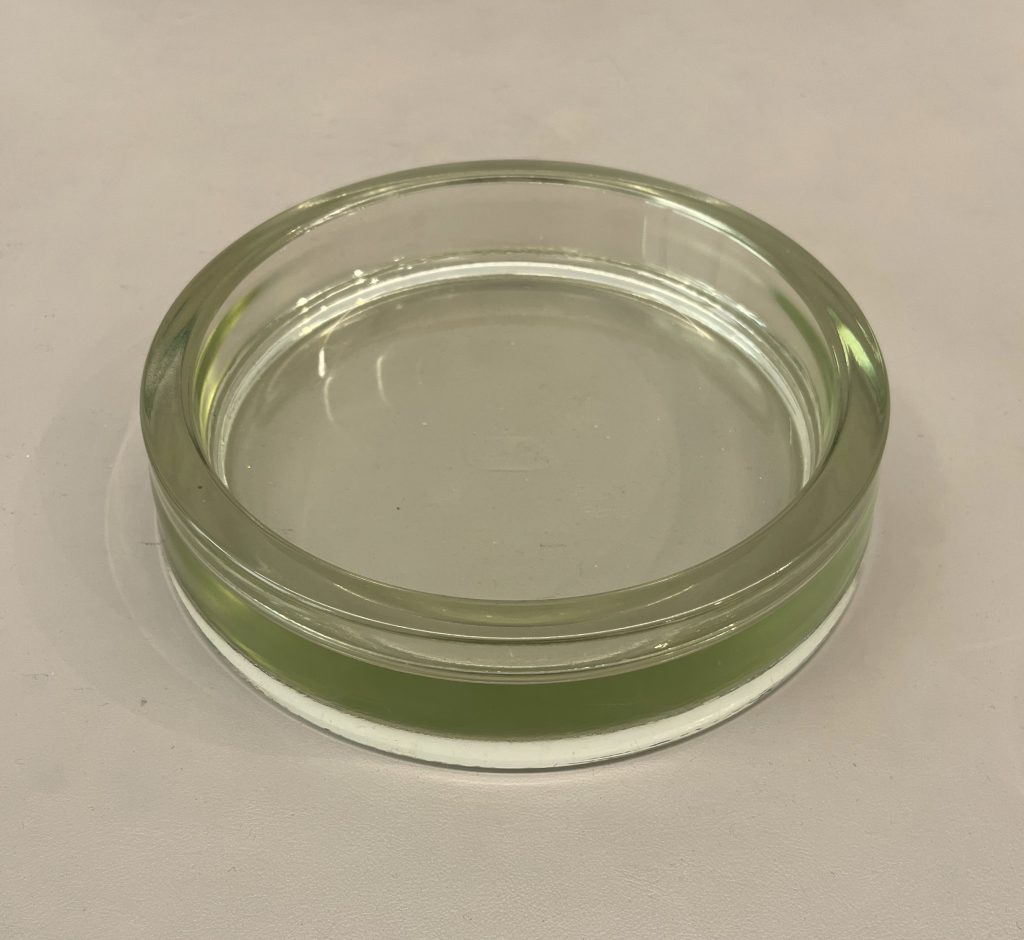



Brynmor Jones Library Record Lending Reader’s Ticket issued in the name of P. A. Larkin. 21 Apr 1971 – a staff library card, issued to Larkin and used by him to take out records from the University Library.
Wooden office door plate: ‘Mr. P. A. Larkin’, c.1955 – Door plate, presumably from Larkin’s original office, prior to the construction of the BJL.
Larkin’s Grundig Stenorette Dictaphone, with earpiece (1970s) – used by Larkin to dictate letters, memoranda and documents, which were then typed up by his secretary Betty Mackereth.
Signature stamp: ‘P. A. Larkin’, 1970s – used by Larkin and by his secretary Betty Mackereth to sign work documents and correspondence.
Larkin’s personal typewriter (Hermes 3000 model), in duck egg blue with duck egg blue case, c.1969 – used at work by Larkin to write letters and type up documents.
Two framed photographs of Guy the Gorilla, from Larkin’s office desk, c.1965 – this oddity was a fixture on Larkin’s desk at work.
China money-box in the form of a frog (or ‘Toad’), from Larkin’s office, c.1970 – This is a reminder of Larkin’s poems Toads, written in 1954, and Toads Revisited, written in 1962, about the necessity of going to work to earn a living. When asked by an interviewer, ‘how did you arrive upon the image of a toad for work or labour?’ he replied, ‘Sheer genius’ (Phillips, 2003). Larkin was given numerous toad or frog themed items. Many of these survive in his personal collection when his house was cleared. This particular one sat on his desk in the library.
Large circular ashtray, clear green glass, features in many photographs showing Larkin at his desk in the Librarian’s office at the BJL. – Larkin was famously a smoker. This ashtray sat on his work desk in this office and can be seen in a number of photographs of the office taken during Larkin’s time.
Sky blue vinyl covered record carry case, with white handle and black felt interior and ‘GPO’ silver stamp. Contains selection of records from Larkin’s personal record collection – Larkin was an avid jazz music fan. He wrote a column for the Daily Telegraph reviewing jazz records, and these pieces were edited into a book ‘All What Jazz: A Record Diary, 1961-1971’. This is a selection of records from Larkin’s personal collection.
Small metal plate displaying the name ‘Larkin’, brown front with letters in white, no holes to indicate it was affixed to a door, possibly a desk name plate – found in his office, presumably used as a desk name plate.
Cream silk scarf with black and cream tassels – used by Larkin on formal work occasions. His academic mortar board and gown are also held at the History Centre.
The Modern-Day Brynmor Jones Library
Following Larkin’s involvement in the transformation of the library, the building has since had another upgrade.
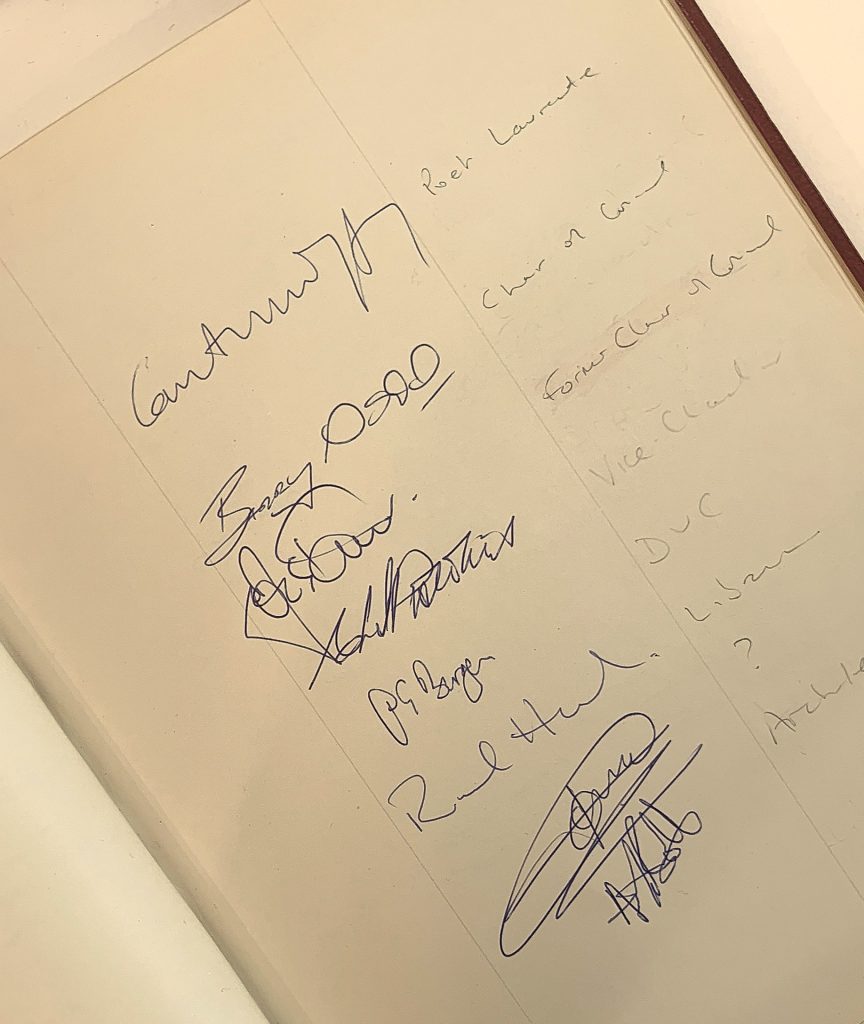
Work began in 2012 and was completed by 2015, with the Poet Laureate of the time, Dame Carol Ann Duffy opening the site
(Left) Duffy’s signature in the Librarian’s Office’s visitor book.
The library’s collection is now slightly larger since Larkin’s time. We now house over one million books in the building, alongside other physical and digital resources.
Larkin Tours
We offer Larkin Tours across the year – visit our updated Larkinian collection in person and book a visit with us today via our website.
Our Larkin Tour includes access to our Librarian’s Office, a private viewing of Larkin’s office items we currently hold within the library, as well as a tour of our 7th floor Observatory and viewing of the Rare Books Room’s Larkin collection.
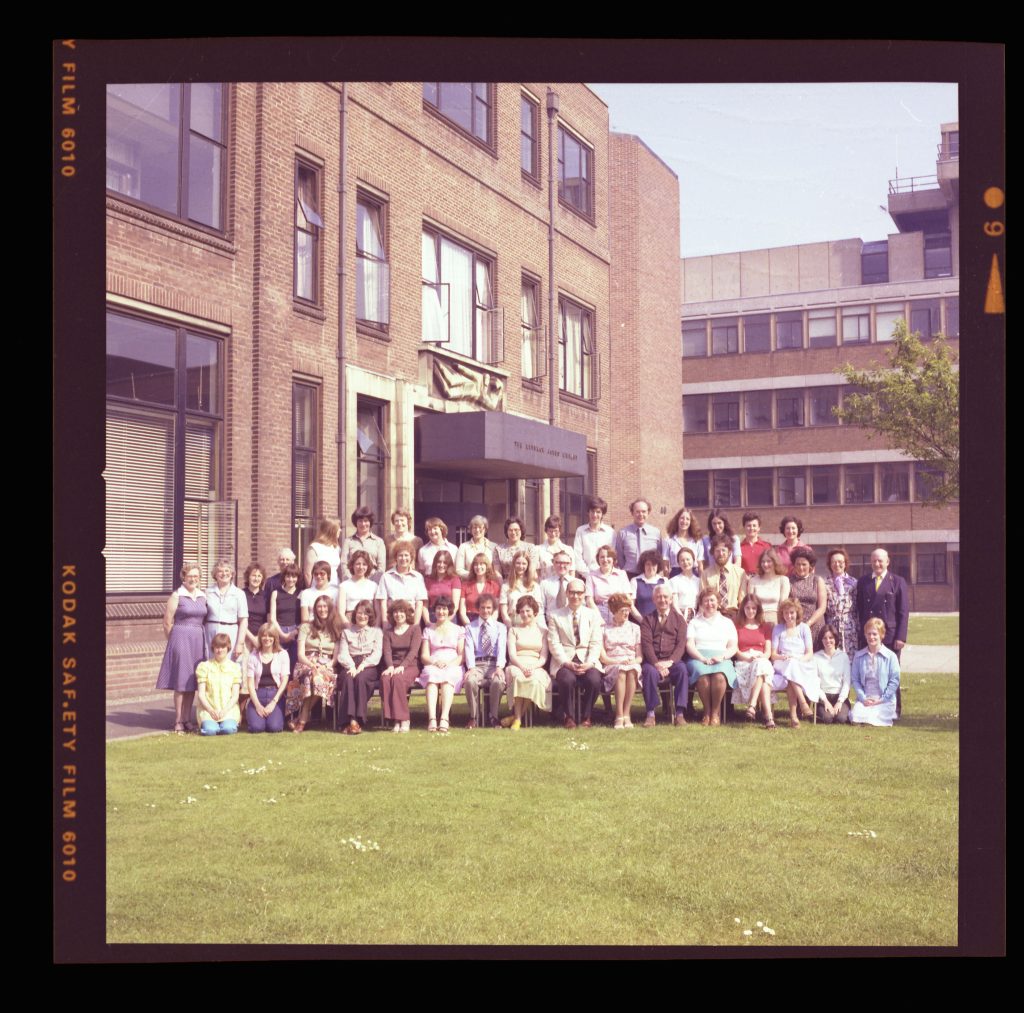
I watched rubescent figments vitrify
‘December’s Door’ by Douglas Dunn, in memoriam to Philip Larkin.
On library windows, unreal
Emblems of warehoused English literature
On the Fifth Floor, and saw again –
When I was in my twenties, I worked there –
Hull’s hazily Utopian green
Purpled and pinkened in a luminous
Record of seasons. Long straight roads
Reached out across nocturnal Holderness,
The sea and the visitless woods.
By Dr. Anna Stevenson
For Reference
Goodman, Richard. (1999). My Particular Talents. Humanities Collections. 1(2), pp.45-60. [Online]. Available at: https://philiplarkin.com/wp-content/uploads/2015/04/my_particular_talents_rgoodman.pdf.
Hull History Centre. (2017). Philip Larkin. [Online]. Hull History Centre. Available at: https://www.hullhistorycentre.org.uk/research/research-guides/philip-larkin.aspx.
Larkin, Philip. (2014). A lifted study-storehouse. In: Burnett, Archie. (Ed). The Complete Poems of Philip Larkin. London: Faber and Faber Limited.
Pearman, Hugh. (2014). After this it will be all Danish butter-factories. [Online]. RIBA. Available at: https://www.ribaj.com/culture/philip-larkin-and-the-architects.
Phillips, Robert. (2003). The Madness of Art. New York: Syracuse University Press. p.23.
